Related Research Articles
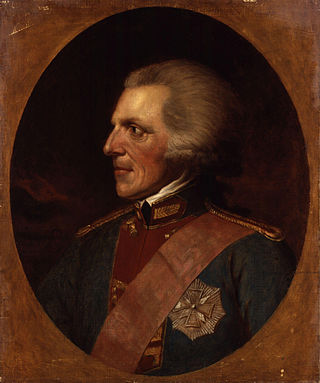
Colonel Sir Benjamin Thompson, Count Rumford, FRS, was an American-born British military officer, scientist, inventor and nobleman. Born in Woburn, Massachusetts, he supported the Loyalist cause during the American War of Independence, commanding the King's American Dragoons during the conflict. After the war ended in 1783, Thompson moved to London, where he was recognised for his administrative talents and received a knighthood from George III in 1784.
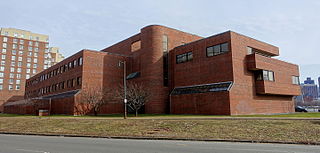
The Rowland Institute at Harvard, formerly the Rowland Institute for Science, was founded by Edwin H. Land as a nonprofit, privately endowed basic research organization in 1980. The institute merged with Harvard University on July 1, 2002. The Rowland Institute is dedicated to experimental science across a wide range of disciplines. Research subjects at the institute includes chemistry, physics and biology, and focus on interdisciplinary work and the development of new experimental tools. It is located on the Charles River near Kendall Square in Cambridge, Massachusetts, and is a few miles away from the main campus of Harvard.

Nicolaas Bloembergen was a Dutch-American physicist and Nobel laureate, recognized for his work in developing driving principles behind nonlinear optics for laser spectroscopy. During his career, he was a professor at Harvard University and later at the University of Arizona and at Leiden University in 1973.

Edwin Herbert Hall was an American physicist, who discovered the electric field Hall effect. Hall conducted thermoelectric research and also wrote numerous physics textbooks and laboratory manuals.
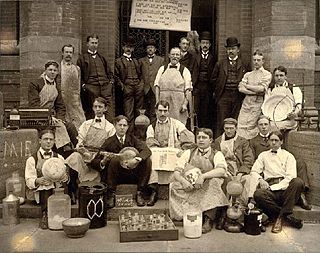
Sheffield Scientific School was founded in 1847 as a school of Yale College in New Haven, Connecticut, for instruction in science and engineering. Originally named the Yale Scientific School, it was renamed in 1861 in honor of Joseph E. Sheffield, a railroad executive. The school was incorporated in 1871. The Sheffield Scientific School helped establish the model for the transition of U.S. higher education from a classical model to one which incorporated both the sciences and the liberal arts. Following World War I, however, its curriculum gradually became completely integrated with Yale College. "The Sheff" ceased to function as a separate entity in 1956.

Oliver Wolcott Gibbs was an American chemist. He is known for performing the first electrogravimetric analyses, namely the reductions of copper and nickel ions to their respective metals.

Eben Norton Horsford was an American scientist who taught agricultural chemistry in the Lawrence Scientific School at Harvard from 1847 to 1863. Later he was known for his reformulation of baking powder, his interest in Viking settlements in North America, and the monuments he built to Leif Erikson.
Daniel Treadwell was an American inventor. Amongst his most important inventions are a hemp-spinning machine for the production of cordage, and a method of constructing cannon from wrought iron and steel.
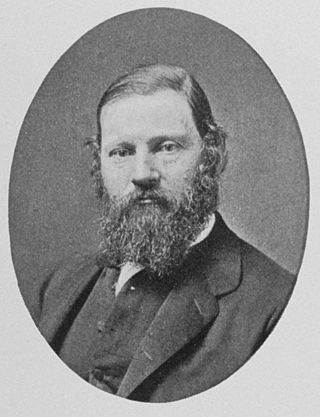
Louis François de Pourtalès was a Franco-American naturalist, born at Neuchâtel, Switzerland.
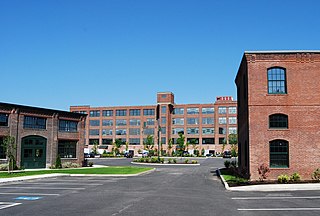
The Rumford Chemical Works and Mill House Historic District is a historic district encompassing the remnants of the Rumford Chemical Works, a historical chemical plant in East Providence, Rhode Island, founded by Eben Horsford and George F. Wilson.

Jacob Bigelow was an American physician, botanist and botanical illustrator. He was architect of Mount Auburn Cemetery in Cambridge, Massachusetts, husband to Mary Scollay, and the father of physician Henry Jacob Bigelow. The standard author abbreviation Bigelow is used to indicate this person as the author when citing a botanical name.
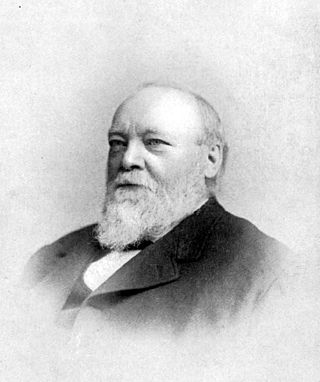
Frederick Augustus Ludwig Karl Wilhelm Genth was a German-American chemist, specializing in analytical chemistry and mineralogy.
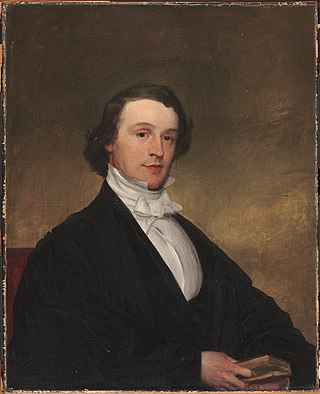
George Edward Ellis was a Unitarian clergyman and historian.

John Mason Clarke was an American teacher, geologist and paleontologist.

William Petit Trowbridge was a mechanical engineer, military officer, and naturalist. He was one of the first mechanical engineers on the faculties of the University of Michigan, the Sheffield Scientific School of Yale, and the Columbia School of Mines. He had a brief military career after graduating from West Point and later served as Adjutant General for the State of Connecticut from 1873 to 1876. During his career as a surveyor on the American Pacific coast he collected thousands of animal specimens, several of which now bear his name.
Sudhanshu Shekhar Jha is an Indian condensed matter physicist and a former director of Tata Institute of Fundamental Research. Known for his research in optoelectronics, Jha is an elected fellow of all the three major Indian science academies – Indian National Science Academy, National Academy of Sciences, India and Indian Academy of Sciences – as well as of The World Academy of Sciences and American Physical Society. The Council of Scientific and Industrial Research, the apex agency of the Government of India for scientific research, awarded Jha the Shanti Swarup Bhatnagar Prize for Science and Technology, one of the highest Indian science awards, for his contributions to Physical Sciences in 1979.

John Trowbridge was an American physicist, noted for his research into electricity and magnetism, and for his innovations in scientific education.
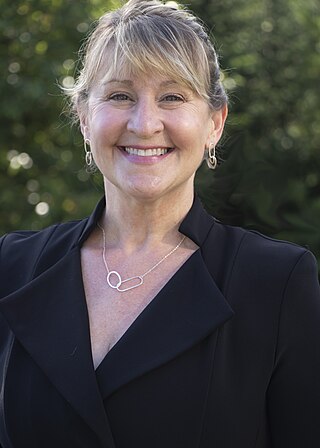
Deborah Ann Bronk is an American oceanographer and the president and CEO of Bigelow Laboratory for Ocean Sciences. She leads the nonprofit research institution in East Boothbay, Maine in its mission to understand the ocean's microbial engine and to harness the potential of these and other organisms at the base of the ocean food web through research, education, and innovation.

Mary Jane Shultz is an American professor and researcher in physical, environmental, materials and surface chemistry at Tufts University. Since 2013, she is also a visiting professor at the Chinese Academy of Sciences.

Mary Gardiner Horsford was an American poet and the wife of chemist Eben Norton Horsford.
References
- 1 2 3 4 5 6 Quinquennial catalogue of the officers and graduates of Harvard university, 1636–1915. Cambridge, MA: Harvard University Press. 1915. p. 21 . Retrieved 2011-04-17.
- ↑ Memoir of Sir Benjamin Thompson, Count Rumford, with Notices of his Daughter. Boston, MA: American Academy of Arts and Sciences. 1871. p. 635 . Retrieved 2019-08-15.
- 1 2 3 James, Mary Ann (1992). "Engineering an Environment for Change". In Elliott, Clarke A.; Rossiter, Margaret W. (eds.). Science at Harvard University: Historical Perspectives. Bethlehem: Lehigh University Press. pp. 55–75. ISBN 9780934223126 . Retrieved 2019-08-15.
- ↑ "Harvard University Department of Physics: Early History of the Department" . Retrieved 2019-06-03.
- 1 2 "National Academy of Sciences Biographical Memoir of John Trowbridge" (PDF). Retrieved 2019-05-06.
- 1 2 3 4 5 6 7 8 9 10 11 "Department of Physics, Harvard University" . Retrieved 2019-05-06.
- ↑ "National Academy of Sciences Biographical Memoir of Wolcott Gibbs" (PDF). Retrieved 2019-05-06.
- ↑ "National Academy of Sciences Biographical Memoir of Edwin Hall" (PDF). Retrieved 2019-05-06.
- ↑ "National Academy of Sciences Biographical Memoir of George Pierce" (PDF). Retrieved 2019-05-06.
- ↑ "Faculty: Jene A. Golovchenko" . Retrieved 2019-05-06.